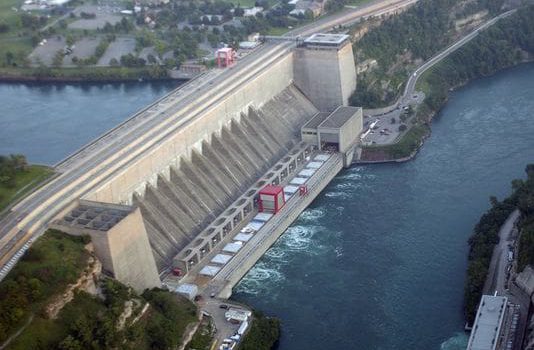)
Free trade in North America has become a contentious issue this year, thanks to attacks by Donald Trump on a wide-reaching agreement implemented by the U.S., Canada and Mexico in 1994.
But even as the pros and cons of the North American Free Trade Agreement continue to be debated in the U.S. election campaigns, new opportunities for commerce among the three countries are emerging, including opportunities in energy.
Among the biggest openings involves imports of clean electricity from Canada, where hydro-power provides the bulk of the nation’s power supply, with plenty to spare.
Electricity harnessed from dams and reservoirs in Quebec, Manitoba, Ontario and British Columbia accounted for 63% of Canada’s electricity supply in 2015, with nuclear energy following at 13%, and wind energy way behind but growing at 2%.
All told, 83% of Canada’s electric generation is emission-free, compared to 32% for power supplies in the U.S. and 25% for those in Mexico, according to Sergio Marchi, the president and CEO of the Canadian Electricity Association.
“We are keen to share that resource wealth with our friends to the south,” Marchi said the other day at a forum on cross-border electricity trade at the Canadian Embassy in Washington.
As the head of a trade group that represents the electricity business in Canada, Marchi obviously has a vested interest in promoting sales in the U.S. Nevertheless, the timing seems right to look increasingly to our neighbor for more green power.
For starters, the U.S. and Canada, not to mention Mexico, are all committed to reducing their carbon emissions under the global climate accord struck in Paris last year. That could change, of course, if Trump is elected and he follows through on his pledge to reverse President Obama’s climate commitments.
At a North American leaders’ summit in Ottawa in June, Obama joined Canadian Prime Minister Justin Trudeau and Mexican President Enrique Peña Nieto in announcing a goal of 50% clean power generation for the three countries by 2025.
Among their proposals for achieving that goal is approving new cross-border transmission projects involving renewable energy.
The Obama administration’s Clean Power Plan, which seeks to curb electric-utility carbon emissions by 32% by 2030, provides added incentives for some states to look north of the border for electricity options, although the policy is being challenged in court by 27 states.
“It’s become abundantly clear that clean energy is the future,” Marchi said. “As such, it will define our industry and our economy and indeed our very way of life as North Americans.”
Canada and the U.S. have been electricity trading partners for more than 100 years. But in 2015, Canadian net exports to the U.S. set a record of nearly 60 terawatt hours, worth $2.8 billion Canadian ($2.1 billion U.S.), thanks to a drought-induced decline in U.S. Pacific Northwest hydropower, comparatively low prices for Canadian electricity and other factors, data from the National Energy Board in Ottawa show.
That electricity trade relies on 35 or so transmission lines, and more capacity will be needed to expand the cross-border flow.
“One of the biggest hurdles will be maximizing the value of existing transmission capacity and building new capacity necessary to accommodate the growing power flows that we speak of,” Marchi said.
Six such projects are under development to bring Canadian electricity to New England, New York and other regions of the U.S. But some face local opposition from residents and business owners who object to new lines being strung across their regions or who prefer other options for meeting energy needs.
If all six projects are approved and built, Canada will be able to increase its electricity exports to the U.S. by 50%, Marchi said.
Despite some resistance in the U.S., Marchi is hopeful that electricity trade between the two countries will grow now that government leaders are setting new clean energy national goals, and that the trend will continue under the next U.S. president.
“The U.S. election has overtaken all of our cocktail chats back home,” he said. “But I for one hope that the next administration, whoever that president will be, takes up where the current administration leaves off, when it comes to nurturing the North American relationship, because it matters. We know that tomorrow’s economy will be built on a foundation of clean sustainable growth.”

